News
Tragedy Near Humayun’s Tomb: Six Dead, Five Injured After Collapse at Dargah Complex
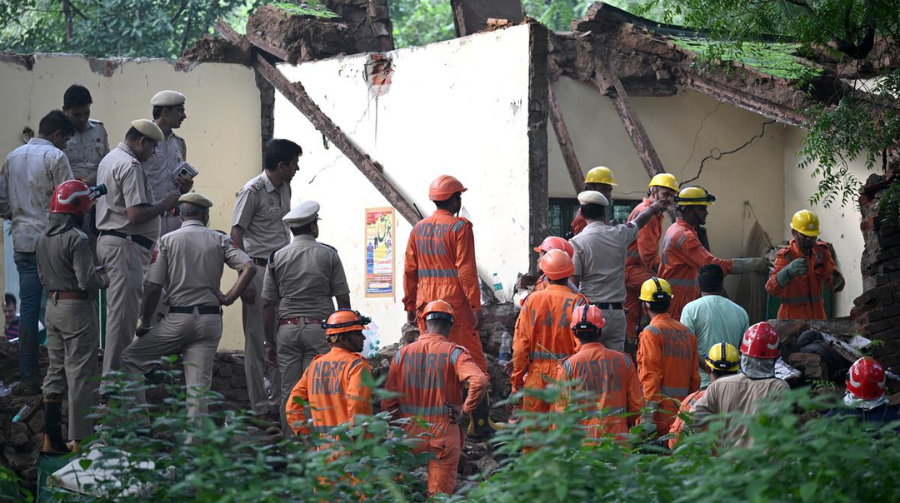
Delhi woke up to heartbreaking news when a portion of an old structure near Humayun’s Tomb collapsed, killing six people and injuring five others. The incident occurred in the Dargah Sharif Patte Shah complex, located behind the UNESCO World Heritage Site. While Humayun’s Tomb itself was not affected, the tragedy has raised urgent questions about the safety of aging structures around historic monuments.
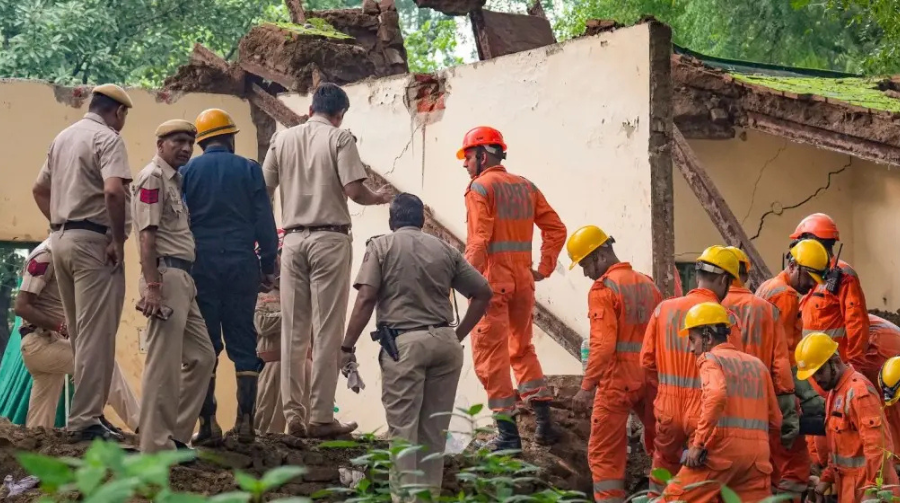
The Site of the Incident
The accident site is not inside the main Humayun’s Tomb monument but at a dilapidated room within the nearby Dargah compound. The Dargah is often visited by locals and pilgrims, especially during religious occasions. Over the years, several portions of the structure had fallen into disrepair, with visible cracks and water damage.
How the Tragedy Unfolded
On the day of the incident, heavy rainfall had been reported across parts of Delhi. Several people had taken shelter inside the fragile structure. Suddenly, without warning, the roof and walls gave way, burying those inside under debris.
Eyewitnesses reported a loud crashing sound followed by cries for help. Locals rushed to the site before rescue teams arrived, using bare hands to pull people out from the rubble.
Rescue Operations: A Race Against Time
The National Disaster Response Force (NDRF), local police, and Delhi Fire Services responded quickly. Rescue efforts lasted for nearly three hours.
- Six bodies were pulled out from the debris.
- Five people were found alive but severely injured and were rushed to nearby hospitals.
Rescuers described the operation as extremely challenging due to the narrow lanes of Nizamuddin area and the unstable debris that posed additional risks.

Victims and Their Families
The victims were mostly local residents and workers. Some had gone to the Dargah to pray, while others sought shelter from the rain. Families of the deceased gathered outside the complex in grief, demanding accountability for the loss of lives.
One survivor recounted:
“We were just sitting inside to avoid the rain. Suddenly, the walls began to crack, and within seconds everything collapsed. People were screaming; we couldn’t move.”
What Triggered the Collapse?
Preliminary investigations point to structural weakness and neglect. The old room was never reinforced despite clear signs of decay. Continuous rainfall may have further weakened the foundation.
Experts suggest that many such unmonitored, heritage-adjacent buildings in Delhi pose similar risks. Without timely inspections and repairs, more such accidents could occur.
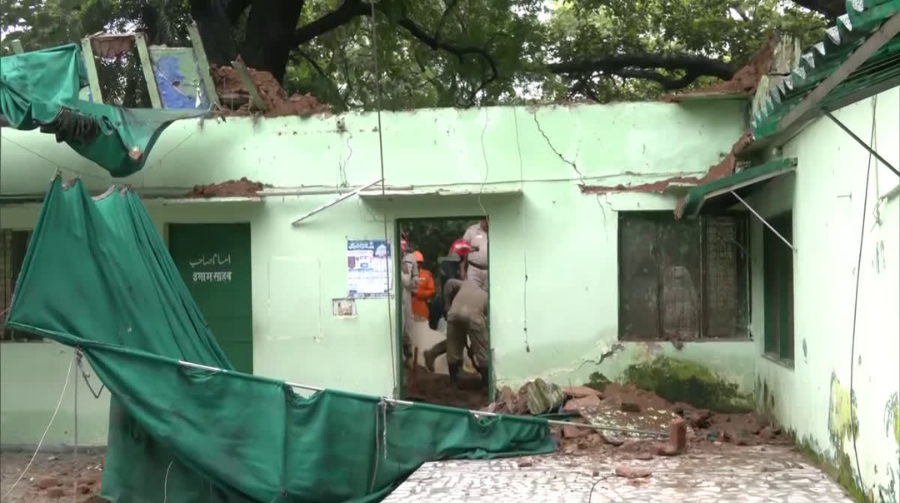
ASI’s Statement: Humayun’s Tomb Remains Safe
In response to rumors, the Archaeological Survey of India (ASI) clarified that Humayun’s Tomb is in perfect structural condition.
- The collapse occurred in a separate structure belonging to the Dargah complex, not within the protected monument area.
- ASI officials reassured the public that the World Heritage Site is regularly maintained and remains completely safe for visitors.
This clarification was important because Humayun’s Tomb is not only a historical monument but also a major tourist attraction, drawing visitors from across the world.
Local Reactions and Anger
The incident has sparked anger among locals, who allege that authorities ignored repeated warnings about the dangerous condition of the building. Residents claim:
- Cracks and leaks had been visible for years.
- Complaints were made, but no action was taken.
- The accident could have been avoided with timely restoration.
Civic bodies are now under pressure to carry out safety audits of all heritage-linked residential and religious complexes.

Importance of Heritage Safety in Delhi
Delhi is home to over 1,700 monuments and heritage sites. While major landmarks like the Red Fort, Qutub Minar, and Humayun’s Tomb are maintained by ASI, many smaller structures are neglected. These include mosques, dargahs, stepwells, and old havelis that still house communities.
Experts warn that unchecked urban development, pollution, and climate factors are accelerating the decay of these structures. Unless proactive measures are taken, tragedies like this will become more frequent.
Historical Significance of Humayun’s Tomb
Although the tragedy did not directly affect Humayun’s Tomb, its proximity makes it necessary to revisit its importance.
- Built in 1565, commissioned by Empress Bega Begum for Emperor Humayun.
- Designed by Persian architect Mirak Mirza Ghiyas.
- Considered the first garden-tomb in the Indian subcontinent.
- Inspired the design of later Mughal monuments, including the Taj Mahal.
- Declared a UNESCO World Heritage Site in 1993.
The tomb is not just an architectural marvel but also a symbol of India’s Mughal heritage. Incidents around it highlight the fragile balance between preserving history and ensuring safety.

Lessons from the Tragedy
The Humayun’s Tomb accident offers crucial lessons:
- Regular Inspections – All heritage-adjacent structures must undergo periodic safety checks.
- Community Awareness – Residents should be educated about risks in dilapidated buildings.
- Funding for Restoration – More government and private funding is required to maintain not just big monuments but also small, neglected ones.
- Emergency Preparedness – Faster disaster-response mechanisms in heritage zones.
News
PM Modi in Mizoram & Manipur: Historic Railway Launch, Development Push, and First Visit Since Manipur Violence

Prime Minister Narendra Modi on Saturday inaugurated Mizoram’s first railway station at Sairang, marking the completion of the ₹8,070 crore Bairabi–Sairang Rail Line, a project that finally connects Aizawl to the Indian Railways network. Despite bad weather preventing him from addressing a rally at Aizawl’s Lammual Ground, PM Modi spoke virtually from Lengpui Airport, describing the day as “historic for Mizoram.”
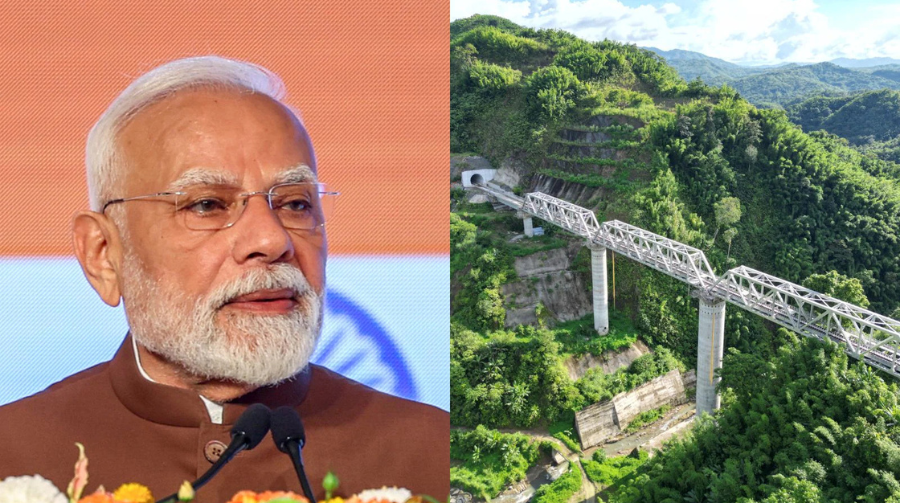
Mizoram: First Rajdhani Express and New Railway Era
- Historic Connectivity: Until now, Mizoram’s rail link was limited to the Silchar–Bairabi route in Assam. The new 51 km Bairabi–Sairang line brings Aizawl onto the national railway map for the first time.
- Engineering Marvel: The project comprises 45 tunnels, 55 major bridges, and 88 minor bridges, built through challenging hilly terrain.
- Flagged Off Services: PM Modi launched Mizoram’s first Rajdhani Express connecting Sairang to Delhi’s Anand Vihar. Two more services—Sairang–Kolkata Express and Sairang–Guwahati Express—were also inaugurated.
- Boost for Growth: The line is expected to cut transport costs, boost trade, tourism, and generate jobs while integrating Mizoram with India’s mainstream economy.
PM Modi said, “This is not just a railway line, it is a lifeline that will transform lives in Mizoram.”
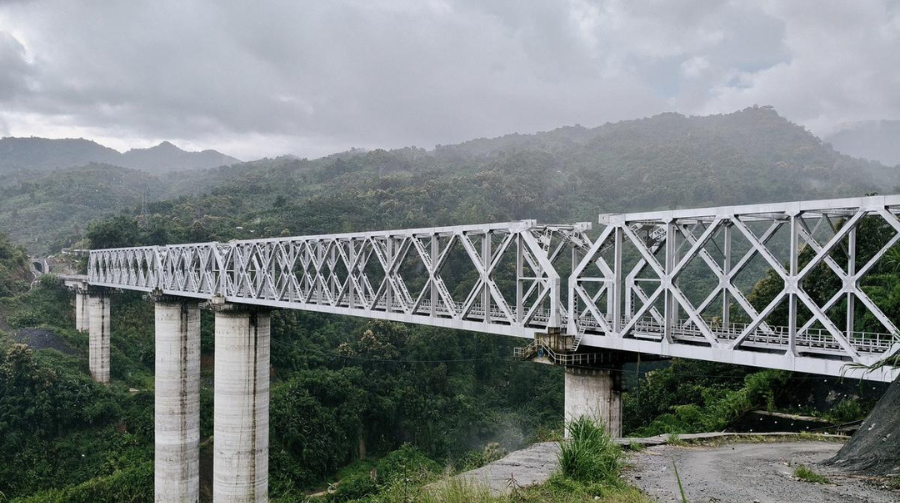
PM Modi on Vote Bank Politics in Northeast
During his speech, the Prime Minister also touched upon the political neglect of the Northeast in the past:
Manipur Visit: First Since Ethnic Violence
After Mizoram, PM Modi headed to Manipur, making his first visit since the ethnic violence of May 2023, which displaced thousands and led to President’s Rule being imposed in February 2025.
- Churachandpur Visit: Modi is expected to meet internally displaced persons (IDPs) in Churachandpur, a Kuki-majority district.
- Imphal Programmes: In the Meitei-dominated capital, Imphal, he will inaugurate and lay foundation stones for projects worth over ₹3,600 crore, including roads, highways, IT infrastructure, working women’s hostels, and the Ima Markets (the world’s largest all-women-run market).
- Symbolic Visit: His visit to both Kuki and Meitei areas is being seen as a strong message of reconciliation and inclusive development.
PM Modi posted on X:
“I will be attending programmes in Churachandpur and Imphal tomorrow. We are fully committed to inclusive and all-round development of Manipur.”

₹71,000 Crore Push for Northeast
The PM’s three-day tour across five Northeastern states includes projects worth over ₹71,000 crore, spanning railways, highways, power, digital infrastructure, and social development initiatives. Officials call it one of the biggest-ever development drives in the region.
Why This Visit Matters
- First railway connectivity for Mizoram’s capital.
- First Prime Ministerial visit to Manipur since ethnic conflict.
- Strong message of inclusive growth and ending neglect of the Northeast.
- Massive development boost across five states.
This moment marks both a historic leap in connectivity and a politically significant outreach to one of India’s most sensitive regions.
News
PM Modi Inaugurates Mizoram’s First Railway Station: Key Details of the Bairabi–Sairang Rail Project
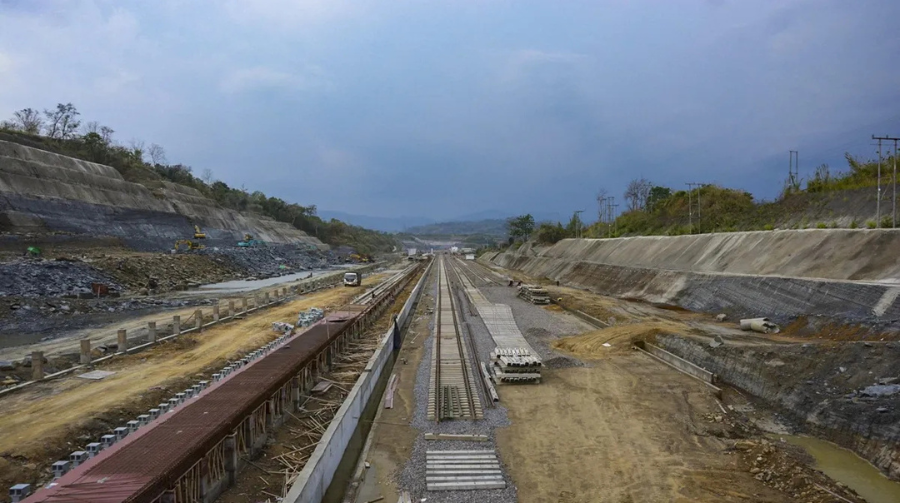
Prime Minister Narendra Modi inaugurated Mizoram’s first-ever railway station at Sairang, marking a historic milestone in India’s connectivity drive. The launch of the Bairabi–Sairang New Rail Line Project, valued at over ₹8,070 crore, officially brings Mizoram’s capital onto the Indian Railways map for the first time.
🚉 Historic Railway Inauguration
On Saturday, PM Modi flagged off the first trains from the Sairang railway station, situated about 12 km from Aizawl. This fulfills a long-standing national vision to connect all state capitals in India’s Northeast by rail.
The inauguration was hailed as a landmark moment of inclusive development, aimed at strengthening integration of the Northeast with the rest of the country.
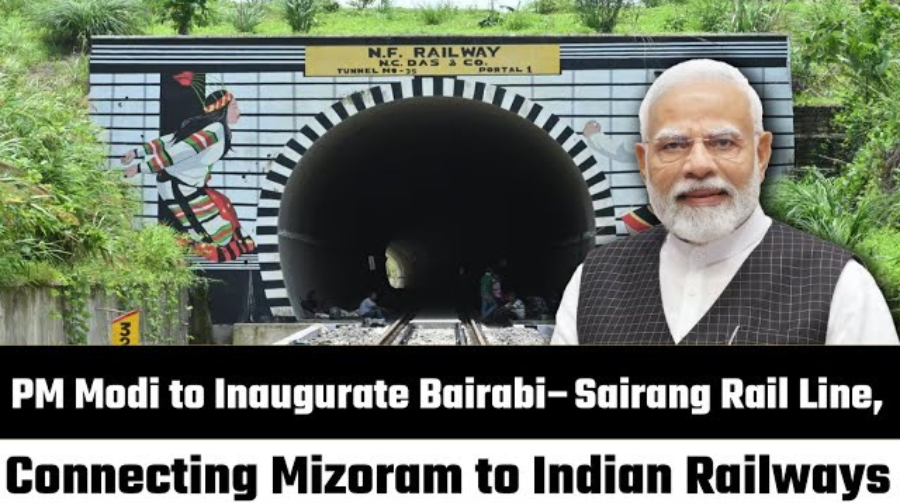
📌 Key Details of the Bairabi–Sairang Project
- Length & Route: 51.38 km of railway line built through rugged, hilly terrain of Mizoram.
- Engineering Marvel: The project includes 48 tunnels, 142 bridges (55 major, 87 minor), road overbridges, and underbridges.
- Highlight: Bridge No. 196, standing 104 meters tall, is taller than Delhi’s Qutub Minar, making it the highest bridge in Mizoram and the second-highest pier bridge in Indian Railways.
- Cost & Timeline: Conceived in 1999, the line was completed at a cost of ₹8,070 crore after decades of engineering challenges including landslides and difficult weather.
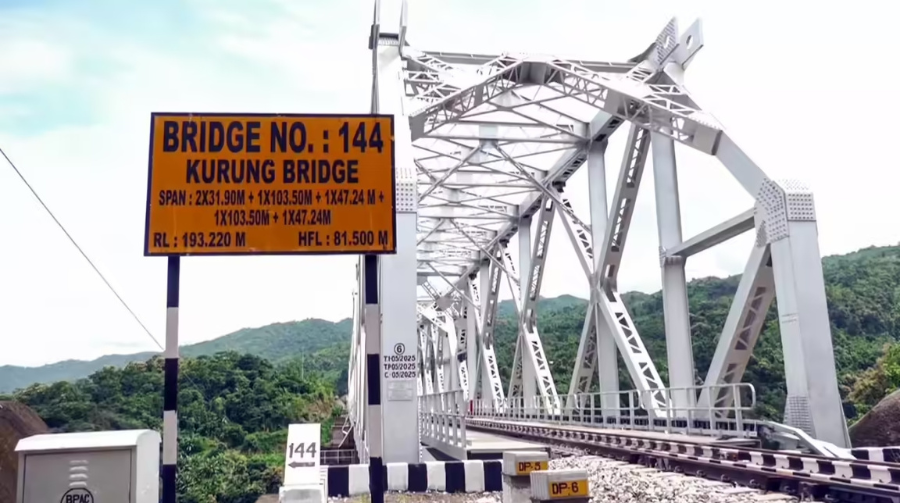
🌏 Connectivity & Socio-Economic Impact
- Regional Link: Aizawl is now the fourth northeastern capital (after Guwahati, Agartala, and Itanagar) connected to the national railway grid.
- Trade & Tourism: The line will reduce dependence on roadways, cut travel costs, and make Mizoram more accessible for business, tourism, and employment.
- Future Prospects: Plans are underway to extend the line further toward the Myanmar border, tying in with the Kaladan Multimodal Transit Project, opening new international trade opportunities.
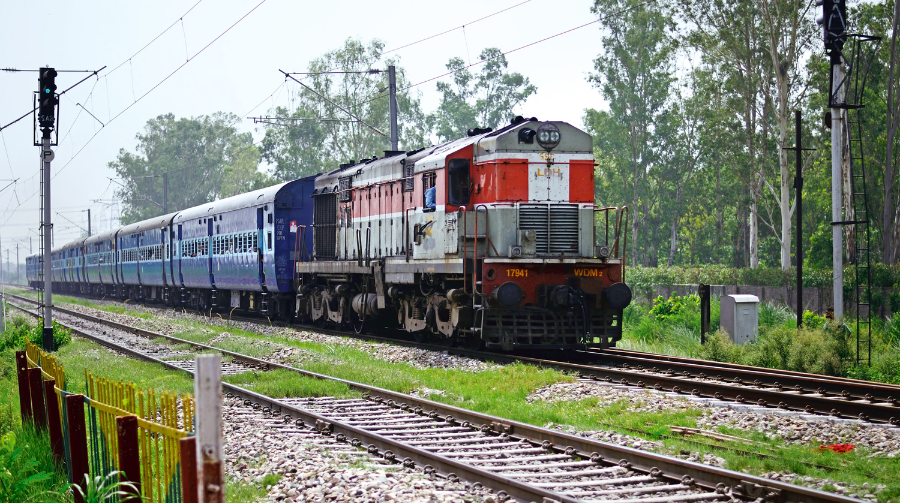
🚄 Inaugural Train Services
- Mizoram’s First Rajdhani Express: Connecting Sairang directly to Anand Vihar Terminal (Delhi), covering 2,510 km in 43 hours.
- New Express Trains: Direct links to Kolkata and Guwahati, ensuring faster and more reliable connectivity for residents.
🏗️ Symbol of Inclusive Growth
Mizoram Governor and Railway Minister hailed the project as a symbol of inclusive national development, bridging geographic isolation with modern infrastructure.
PM Modi emphasized that such projects embody India’s vision of ensuring equal progress in every corner of the country, no matter how remote.
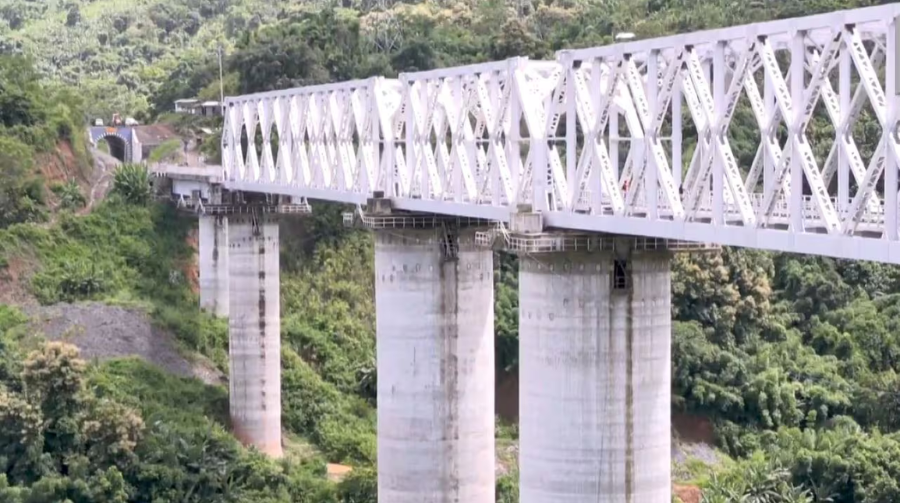
📖 Conclusion
The inauguration of the Bairabi–Sairang rail line is more than a transport milestone—it represents integration, opportunity, and growth for Mizoram and the entire Northeast. From cutting travel time to enhancing economic prospects, the project is poised to transform the lives of lakhs of people, while also showcasing India’s engineering prowess in one of the country’s most challenging terrains.
News
Delhi Police Busts ISI Spy Module: Nepali Man Held for Sending Indian SIM Cards to Pakistan
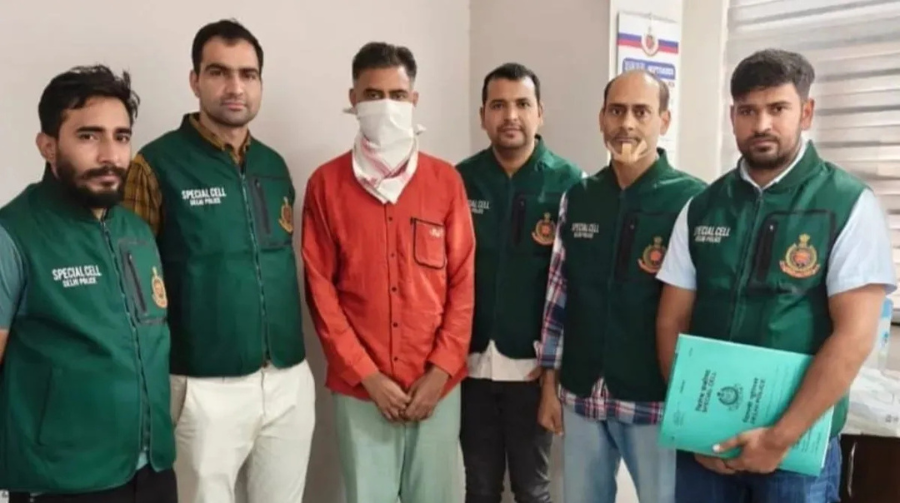
The Delhi Police Special Cell has busted a major espionage racket linked to Pakistan’s intelligence agency ISI and arrested a 43-year-old Nepali citizen, Prabhat Kumar Chaurasia, for supplying Indian SIM cards that were being used in Pakistan.
According to officials, Chaurasia had procured 16 Indian SIM cards (Airtel and Jio) using his Aadhaar card. Out of these, 11 SIM cards were traced as active on WhatsApp in Pakistan, in cities like Lahore and Bahawalpur. The SIM cards were smuggled through Nepal to ISI handlers, who used them to attempt contact with Indian Army officials.

Attempts to Extract Sensitive Defence Information
Police investigations revealed that Chaurasia had been in touch with ISI operatives since 2024. The Pakistani agency allegedly lured him with promises of a US visa and a career in journalism abroad in exchange for his services.
Through the WhatsApp accounts registered on these Indian SIMs, attempts were being made to extract sensitive defence-related information. Delhi Police has registered a case under sections 61(2)/152 of the BNS at the PS Special Cell and further interrogation of the accused is underway to uncover wider links.
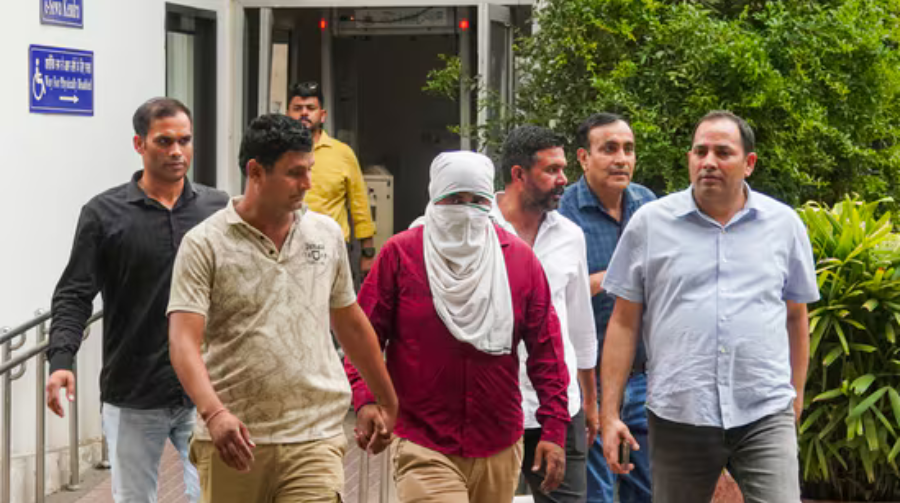
Pakistan’s Continued Espionage Attempts
This case adds to a long list of espionage attempts by Pakistan that Indian security agencies have foiled over the years. By exploiting loopholes in telecom systems and targeting vulnerable individuals with financial or career incentives, ISI has repeatedly tried to infiltrate Indian defence communications.
Officials pointed out that routing SIM cards through Nepal is a known ISI tactic to bypass direct detection. The fresh module’s bust highlights how Pakistan continues to adopt underhanded methods to destabilise India and gather intelligence.

Timing Amid Strained India-Pakistan Relations
The incident comes against the backdrop of tense India-Pakistan ties, particularly after the recent Pahalgam terror attack, where India publicly exposed Pakistan’s role before the international community. This exposure has reportedly irked Islamabad, prompting renewed espionage efforts.
Indian agencies, however, remain vigilant. The arrest of Chaurasia and the exposure of this spy module is seen as a major success in neutralising Pakistan’s covert operations.

Significance of the Bust
- Prevented possible leaks of defence information.
- Exposed ISI’s recruitment tactics using false promises of foreign visas and careers.
- Highlighted the use of telecom loopholes (routing SIMs via Nepal).
- Strengthened India’s counter-espionage operations at a sensitive time in regional security.
-

 Celebrity Lifestyle4 months ago
Celebrity Lifestyle4 months agoEx-Cricketer Shikhar Dhawan Buys Ultra-Luxury Apartment Worth ₹69 Crore in Gurugram
-

 Glamour & Entertainment3 months ago
Glamour & Entertainment3 months agoTelegram Channels Disseminating Pro‑Russian Propaganda in Poland
-

 Business3 months ago
Business3 months agoAmazon sets 30‑day relocation deadline for corporate staff—opt out by resigning in 60 days
-

 Celebrity Lifestyle3 months ago
Celebrity Lifestyle3 months agoMaha Kumbh Girl Monalisa seen in car allegedly worth ₹1 crore
-

 Education3 months ago
Education3 months agoNEET UG Controversy Explained: Paper Leak, Impersonations & Ongoing Probe
-

 News4 months ago
News4 months agoIndia offers zero-for-zero tariffs on auto parts, steel from US
-

 News4 months ago
News4 months agoOperation Sindoor Live Updates: Pakistan used Turkey-made drones to target 26 locations, military sites in north India
-

 Cricket3 months ago
Cricket3 months ago💥 Nicholas Pooran IPL Heroics: Sixes, Records & Match-Winning Blasts




